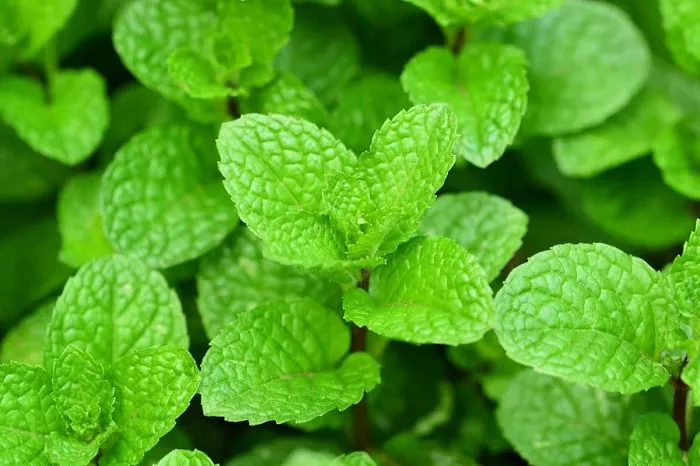Mint plants, with their refreshing aroma and versatile uses, have long been cherished in gardens and homes. Beyond their culinary and medicinal applications, mint is renowned for its ability to repel a variety of unwanted pests. This natural repellent not only enhances the health of your garden but also provides an eco-friendly alternative to chemical pesticides. Let’s explore the fascinating world of mint and its remarkable repellent properties.
The Alluring Aroma of Mint: A Shield Against Pests
Mint plants are celebrated for their strong, invigorating scent, which is a powerful deterrent for many common garden pests. The essential oils in mint, such as menthol and pulegone, produce a fragrance that confuses and repels insects. This natural defense mechanism makes mint an invaluable addition to any garden, especially for those seeking organic pest control solutions.
Repelling Insects: A Natural Barrier
Mint is particularly effective against a range of insects that can wreak havoc in your garden. Aphids, for instance, are a common nuisance that can damage plants by feeding on their sap. The strong scent of mint masks the scent of the plants that aphids typically target, making it difficult for them to locate their preferred food sources. By planting mint near vulnerable plants, you can create a natural barrier that keeps aphids at bay.
Keeping Mosquitoes at Bay
In addition to aphids, mint is also known to repel mosquitoes. The menthol in mint leaves produces a scent that mosquitoes find unpleasant, making it an excellent natural mosquito repellent. Planting mint around outdoor seating areas or near windows can help reduce the number of mosquitoes, providing a more enjoyable outdoor experience without the need for chemical sprays.
Deterring Ants and Rodents
Mint’s repellent properties extend beyond insects. Ants, which can be a significant problem in gardens and homes, are also deterred by the strong scent of mint. Placing mint leaves along ant trails or near entry points can help discourage them from entering your home or garden. Similarly, rodents such as mice and rats are repelled by the mint’s aroma, making it a useful deterrent for these unwanted visitors.
Beyond Insects: Mint’s Influence on Other Pests
While mint is primarily known for repelling insects, its effects extend to other types of pests as well. For example, mint can help protect your garden from slugs and snails. These slow-moving creatures are deterred by the strong scent of mint, which makes it less likely for them to feast on your plants. By strategically placing mint plants around your garden, you can create a natural barrier that keeps these pests at bay.
Protecting Your Garden from Fungi and Diseases
In addition to repelling pests, mint also has antifungal properties. The essential oils in mint can help inhibit the growth of fungi, which can be particularly beneficial in preventing diseases such as powdery mildew. By planting mint among your other plants, you can create a healthier garden environment that is less susceptible to fungal infections.
Enhancing the Health of Your Plants
The presence of mint in your garden not only helps repel pests but also enhances the overall health of your plants. The strong scent of mint can mask the scent of other plants, making it more difficult for pests to locate them. This natural protection allows your plants to grow stronger and healthier, without the need for chemical interventions.
Growing and Using Mint in Your Garden
Mint is a versatile and easy-to-grow plant that can thrive in a variety of conditions. It prefers well-drained soil and partial shade but can also tolerate full sun. Mint spreads quickly, so it is often best to plant it in containers or designated areas to prevent it from taking over your garden. By planting mint strategically, you can maximize its repellent properties and create a healthier garden environment.
Planting Mint for Maximum Effect
To take full advantage of mint’s repellent properties, consider planting it near vulnerable plants such as tomatoes, cucumbers, and carrots. These plants are often targeted by pests like aphids and slugs, and the presence of mint can help protect them. Additionally, planting mint around the perimeter of your garden can create a natural barrier that keeps pests at bay.
Using Mint Leaves for Pest Control
In addition to planting mint, you can also use mint leaves directly for pest control. Crushed mint leaves can be placed in areas where pests are a problem, such as near windows or along ant trails. The strong scent released by the crushed leaves will help deter pests and keep them away from your home and garden.
Conclusion
Mint plants are a valuable addition to any garden, offering a natural and effective way to repel a variety of pests. From insects to rodents, the strong scent of mint provides a powerful deterrent that can help protect your plants and create a healthier garden environment. By incorporating mint into your garden design and using it strategically, you can enjoy the benefits of this versatile plant while reducing your reliance on chemical pesticides. Embrace the natural power of mint and transform your garden into a thriving, pest-free oasis.


